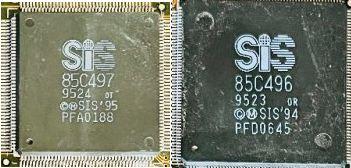First post, by analog_programmer
- Rank
- Oldbie
Okay, here's what I have on the repair workbench right now:
It was identified as AOpen AP4.
It's a matter of days to fix a few broken traces and move on to testing. However, I do have one problem. I don't have any SIMM-memory modules with 72 pins, but I can buy a few at good price with an option for discount past other old parts. And I don't know what voltage for 72-pin SIMM memory this motherboard provides - maybe I'm missing it in the user's manual. I also don't know what type or RAM EDO or FP, buffered or unbuffered, parity, non-ECC(???)... whatever it supports best.
If someone can give me clarity on which type of 72-pin SIMM memory modules will be fully compatible with this AOpen AP4 mobo, please share this info with me. Thanks in advance!
from СМ630 to Ryzen gen. 3
engineer's five pennies: this world goes south since everything's run by financiers and economists
this isn't voice chat, yet some people, overusing online communications, "talk" and "hear voices"
